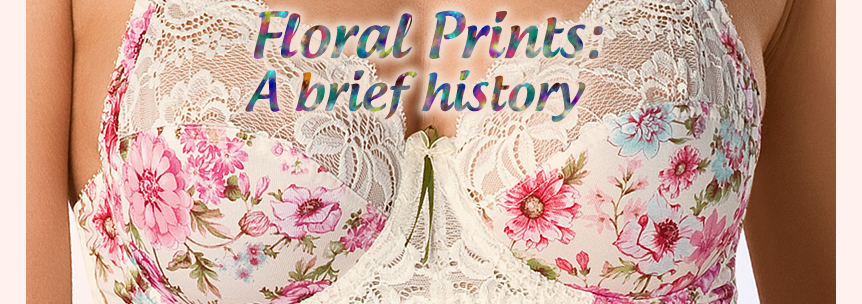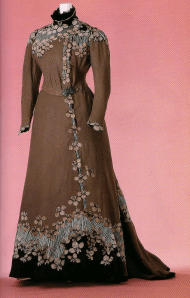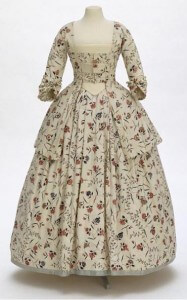Its no secret that ladies love flowers, and floral printed fabrics have been a fashionable item for hundreds of years. It makes sense wearing flowers to decorate our clothes; they are pretty, they are symbolic of femininity, and they show the beauty of the natural world.
The floral print originates from the east and Asia; throughout history, traders brought fabrics with ornate floral designs to Europe where they sold for very high prices. To have been able to wear these fabrics was a status symbol. Over time European manufacturers began to copy these fabrics to suit European tastes at a cheaper price, and the rest is history!
We first see fabrics with floral designs in the late Middle Ages; Italian merchants traded regularly with Ottoman textile manufacturers and brought sumptuous woven velvets to Europe. Eventually Italians weavers figured out how to copy these velvets, and began to produce luxurious textiles with organic motifs like pomegranates and vines. These early floral motifs, however, were quite ornate, heavy and stylized.
One of the most famous floral fabrics, chintz, has its origins in India (handmade in the country from between 1600 and 1800). Chintz, a glazed cotton cloth printed with tiny, multicolored floral motifs, was exported to Europe via Dutch and British merchants during this era. Initially, the British could not figure out how to copy the expensive chintzes, so, in 1680 the fabric was banned from import. By 1759, however, British manufacturers had solved the mystery of production, and were able to print chintzes at a low price. With the Industrial Revolution of the nineteenth century, textile production increased tenfold, and machine printed chintzes flooded the market and were used extensively in women’s day dresses. When discussing florals, we cannot forget the bold floral silks produced in Japan and China for centuries. It was during the late nineteenth century, however, that European artists began to take notice of the arts of Asia, especially the Impressionists. By depicting Chinese folding screens and Japanese kimono in their paintings, these artists started the vogue for Orientalism which would last in the Occident until the World War II. Fashion fabrics of this era, especially those created in the Art Nouveau style, featured stylized and modern floral motifs inspired by Asian examples.
So, in homage of spring, which is hopefully just around the corner, wear some colorful floral fashion and lingerie to brighten your day!
Information Sources
http://en.wikipedia.org/wiki/Chintz
http://en.wikipedia.org/wiki/Japonism
Leave a Comment
Pingback: FLORAL FASHION TREND. Tendencia Floral | BOO POO BEE DOO TEES, FUNNY, COOL, ORIGINAL, OR TRENDY CUSTOM T-SHIRTS AND FASHION. ( TEES & TRENDS ) on March 30, 2011
Pingback: FASHIONISTA SPOTLIGHT: Laura Klym | College Fashionista on March 30, 2011








2 COMMENTS